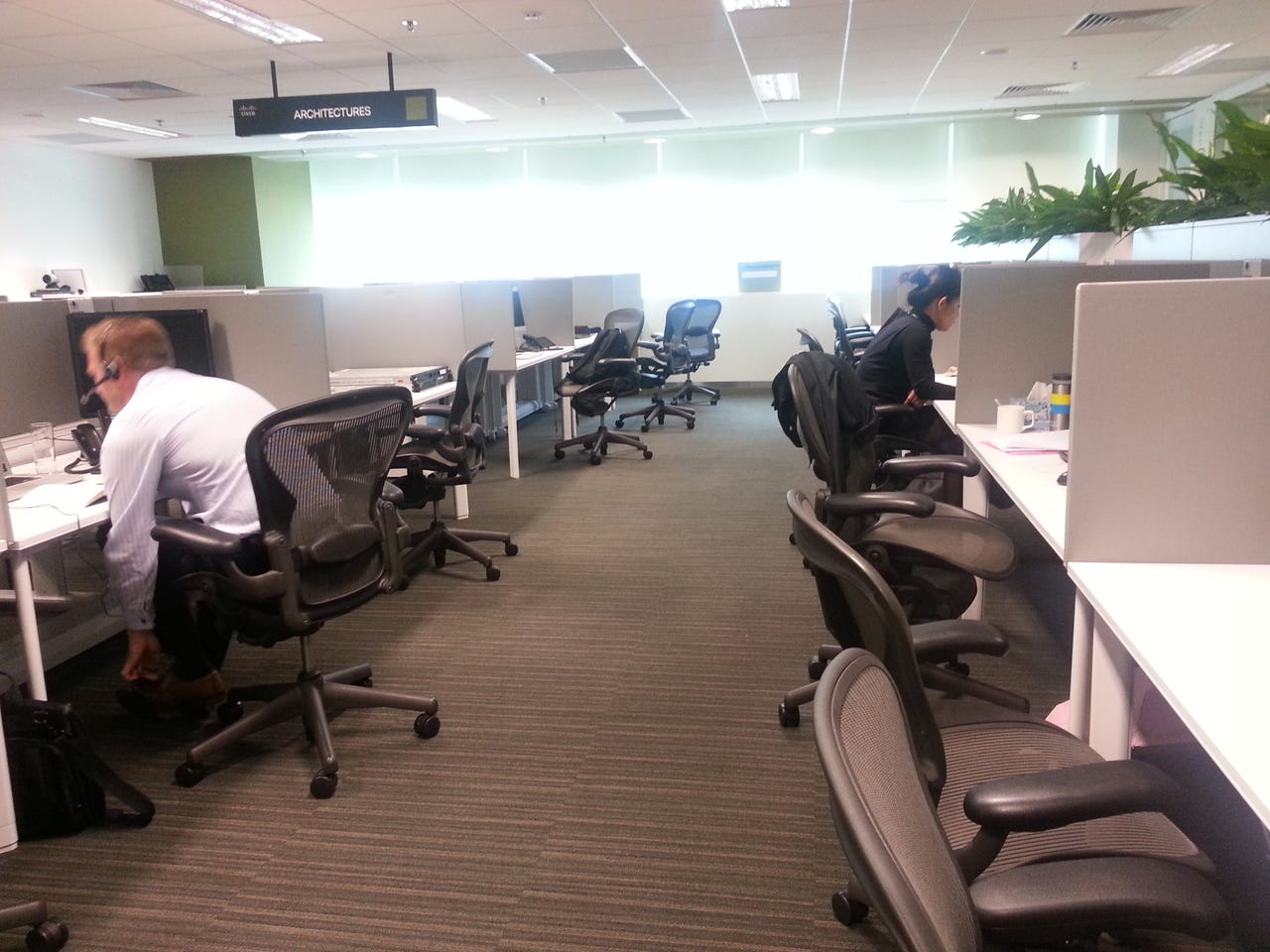Cisco taps BYOD for productivity, innovation

SINGAPORE--Cisco Systems on Wednesday launched its new Asia-Pacific headquarters in Singapore and, with it, a fully mobile workforce that it hopes will drive innovation and bring out the best in their employees.
Speaking at the official launch here Wednesday, Gary Moore, president and COO of Cisco, said the new headquarters consolidates its previous four Singapore offices and 1,000 employees here into one space. This has helped the company save 40 percent of workspace needed--with the human-to-seat ratio at 2:1--and brings about greater productivity with its open work environment, he said.
Elaborating, Moore said since employees moved to the new premises in the second week of December 2012, they are not assigened a fixed seat. Rather, they are able to work using their mobile devices from anywhere in the office including cubicles, meeting rooms, or even remotely via videoconferencing, he noted.

This bring-your-own-device (BYOD) strategy is not new however, said Irving Tan, vice president for Cisco South East Asia. Before the change in office, 40 percent of its employees were allowed to bring their personal mobile devices to work and did not have assigned cubicles. The devices were paid for by staff, and the company only subsidized their phone bills, he revealed.
The policy has since been extended to the rest of the company. Tan said Cisco chose to embrace BYOD fully because employees can work anytime and anywhere, bringing greater productivity to the organization. This is especially crucial so the Generation Y entering its workforce will adjust quickly given that they had "grown up with ability to work on their laptops while having a coffee at Starbucks", he said.
"By giving employees the flexibility to work, they will not only be more productive but have the ability to collaborate with their colleagues better through the use of technologies which brings about greater innovation," he added.
Commenting on Yahoo CEO Marissa Mayer's decision to end telecommuting and have employees work in office, Moore said it had been a "bold move" as she had to make some significant changes to get a better feel of the ground to rebuild morale and culture.
Unlike Yahoo, Cisco does not have "such issues" because it fully believes in the concept of the connected workspace. "You are either out making business or in the facility utilizing our technologies; either way it drives productivity," he said.
Mobile workforce generates dynamism
Asked to quantify the benefits of BYOD on its business, Tan said the benefits of having a mobile workforce were of the intangible kind focusing on cultural changes. These include having employees interacting and collaborating differently with each other compared to the past, he noted.
The executive added employees were "happy" as they had a direct impact on the company's strategy, with most of them stating in an internal survey BYOD would help create a more collaborative environment.
The choice of situating the office away from the city and in Changi Business Park was also endorsed by the workforce as they are better able to balance work and play. For instance, some of them would have bonding sessions after work such as group cycling, Tan revealed.
Cisco's mobile workforce strategy is also a global initiative, he added. Not all offices worldwide have implemented the system but are in the process of getting there, he said.
Security an important consideration
In terms of implementation considerations, IT security was a key concern as there were risks involved with data sovereignty with a BYOD strategy. To this, the company had "paid a lot of attention" to it, Moore said.
To counter the security risks, Cisco had implemented several policies on device usage and business processes. A cybersecurity team was also set up to tackle the challenges of mobile device management (MDM) within the organization, he explained.
For instance, the company has a device wipe policy which requires employees to allow Cisco's IT team to remove any corporate data stored on their personal computing devices, the president stated.
Security technologies are also used, Tan added. An automated access function exists on employees' devices, whereby they have to go through a self-service process to log in, coupled by multiple levels of authentication, he explained.